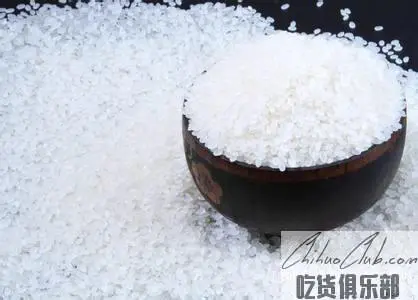
Badarengui Rice
-
Update date::
-
Date of protection::
-
Protected range:The production area of Bada's still expensive rice is the administrative area of 5 towns and towns of Guiliuhe Town, Balaguer Township, Juli Town, Chaersen Town and Dashizhai Town of Inner Mongolia Autonomous Region.
-
Category:
Bada is still a fertile ground for the nourishment of the river and the river. Nowadays, it is still close to the "primitive" natural environment, which makes rice far from chemical fertilizers and pesticides, and has made natural rice fragrance. “Bada is still expensive” registered trademark is “Inner Mongolia Famous Trademark”, “Bada is still expensive rice” series products have been rated as “Inner Mongolia Famous Brand Products” by the Inner Mongolia People’s Government for many years. As a brand of organic rice, it has entered the dietary consumption. The high-quality products have won wide acclaim in Inner Mongolia and the northern market and are very popular among consumers.
According to the report, Bada still planted rice in 1953. The Korean immigrants jointly developed 80 acres of paddy fields with the local Han, Mongolian, Manchu and Daur. At that time, the annual mu yield was about 300 kg. Then, according to the annual development of 80 mu, the scale of development reached 478 mu in 1959, and the yield per mu reached about 400 kg. Since 1984, Hugechao has been developed separately, and Hu Dacha has been surveyed. The paddy field covers an area of about 20,000 mu and the yield per mu reaches 500-600 kg. 1985 Keqianqianqi Agricultural Bureau introduced rice transplanting technology from Fangzheng County, Heilongjiang Province, resulting in a quality leap in the quality of rice planting technology, and the yield per mu reached 800 kg. The paddy field has been developed to more than 30,000 acres. And this technology is the first of the Xing'an League in Inner Mongolia Autonomous Region. So far, Keyouqianqi has 102,000 mu of paddy fields. Bada is still a fertile ground for the nourishment of the river and the river. Nowadays, it is still close to the "primitive" natural environment, which makes rice far from chemical fertilizers and pesticides, and has made natural rice fragrance. Bada is still a Mongolian language, meaning "prosperous and developed." At that time, the entire area of Bada was still called the area: Aguisang. ("Agui" is Mongolian, meaning "cave". Before and after 1920, there was a cave in the north of Hugueji Letu, and there was a temple called "Shenxian Cave". "Sangruba" was the name of the people. The famous singer who lives in the local area, Agui Sangruba, is named after it.) Originally, Bada was still in the same place as Guiliuhe, and it was a Guluntutut (Nutuk was in Mongolian. The meaning of the district is the administrative unit of Montenegro in the old times, which is smaller than Biqi County and larger than the township and township, which is equivalent to the district level. It enjoys two rivers. In May 1961, Bata was still expensive from Guluntu Separation of the establishment of the Bada still Guigong commune, in January 1984 changed to Bada still expensive Sumu, in March 2004 removed the township and town, and merged with Guiliuhe Town, broke up again after 43 years. 2004 In April, Bada was still in the management area. In April 2006, it was changed into an office.
Bada still expensive rice quality technical requirements I. Variety selection Choose the rice flower fragrance No. 6, 绥粳 4, etc. suitable for the production of the place. Second, the site conditions are mainly meadow soil and marsh soil, the soil organic matter content is ≥30g/kg, the thickness of the tillage layer is ≥30cm, and the pH value is 6.0 to 7.0. Third, cultivation management Breeding: The breeding method is dry nursery, and 648-hole 毯-shaped blanket seedlings (秧) trays are used for seedlings, and 125g of buds per plant are planted. The sowing period is from April 15th to 20th. 2. For 35 to 40 days of age, Honda needs 32 seedlings per 667 m2 (mu), ≤ 21,000 holes per 667 m2 (mu). 3. Fertilizer management: Apply ≥1 ton of decomposed organic fertilizer per 667m2 (mu) and irrigate with surface river water. 4. Environmental and safety requirements: The use of pesticides, fertilizers, etc. must comply with relevant national regulations and must not pollute the environment. Fourth, the harvesting time is from October 1st to October 15th, naturally drying. V. Processing of rice weighing → magnetic separation → stone removal → decontamination → glutinous rice → rice coarse separation → de-crushing → color selection → polishing → white rice classification → quantitative packaging. Sixth, quality characteristics 1. Sensory features: rice grains are long or oval. The rice is full and crystal clear. After cooking, the rice is bright and shiny, soft and refreshing, slightly sweet and moderately viscous. 2. 3. Safety and other quality technical requirements: Product safety and other quality technical requirements must comply with relevant national regulations.
Apply to:
The producers of Bata's still-growing rice production area may apply to the Quality and Technical Supervision Bureau of Keyouqianqi of Inner Mongolia Autonomous Region for the use of the “Special Mark for Geographical Indication Products”, which is reviewed by the Quality and Technical Supervision Bureau of Inner Mongolia Autonomous Region and reported to the General Administration of Quality Supervision, Inspection and Quarantine. Announced. The testing organization of Bada's still expensive rice is selected by the Quality and Technical Supervision Bureau of Inner Mongolia Autonomous Region in the testing institutions that meet the qualification requirements.